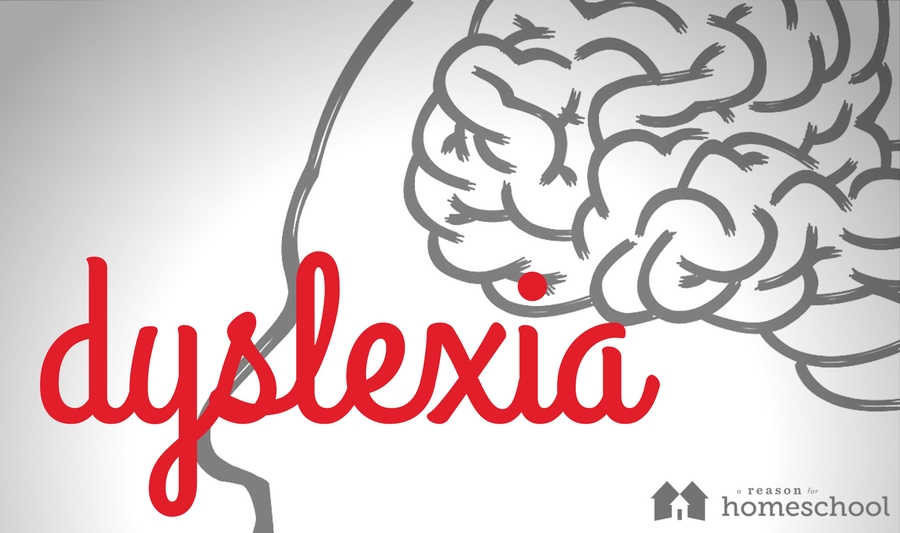It can be overwhelming to find out that your child is struggling with dyslexia.
I was pretty blindsided by it myself. Our son had none of the very early warning signs. He spoke early, and never stuttered. His attention span was fine for that of a toddler and preschooler (especially for a boy, I thought). His gross motor skills were amazing. The child could run, jump, and climb with the skill of a professional stuntman. He could follow directions as well as the next kid. We had no reason to suspect something might be amiss.
When he began struggling with reading and writing in kindergarten, I was surprised but figured it just wasn’t his forte. He was very strong verbally (translation: never stopped talking) and he had a knack for science. We watched and waited, continuing the same curriculum and teaching methods that had worked for his older sister and brother.
After a while, though, it became apparent that he was not processing the material or progressing.
It will come as no shock to any home educator that when reading and writing suffer, all subjects suffer. My son started to fall behind. His little brother passed him in most subjects. His self-confidence plummeted, and he stopped wanting to try because it was just too hard for him.
This is where my mom guilt comes in: I wish we had sought help sooner, watched more closely, taken small signs more seriously. I’m sure every parent feels this way after getting a diagnosis, of any kind. But, really, what matters is that we did catch it, and found ways to help. We started researching dyslexia, found an instructor to evaluate him. With an official diagnosis, we proceeded with private tutoring, and armed ourselves with new methods.
I wish we had sought help sooner, watched more closely, taken small signs more seriously. I’m sure every parent feels this way after getting a diagnosis, of any kind. But, really, what matters is that we did catch it, and found ways to help. Click To TweetThese are tips and tricks that have made a difference for us in homeschooling our son with dyslexia:
- Incorporate visual learning. Look at an object or image to aid in learning the word.
- Involve whole-body learning. Write the word in the air, touch the object, act it out, anything to get moving and engage the whole body.
- Use quidrille paper for math. The grid helps our son keep his numbers lined up, greatly reducing simple errors.
- Incorporate sight words into games like Go Fish or Concentration. You can make or buy cheap flash cards for this.
- Use visualization: take a mind snapshot of the word, to recall spelling. Prompt when necessary; “Which letter do you see first in your mind?”
- Use stories to teach.
- Point out graphics in books, and use flashcards with graphics.
- Analyze new words. How many letters are there? How many vowels? What sound does it begin with? What does it rhyme with?
- Introduce new words slowly. Start with only a couple, and add another every day or two until you have 10-12 words to practice. As each word is mastered, add another word to replace it.
- Display words that are mastered, to review periodically and also to demonstrate your child’s progress.
- Use mnemonics: for example, a song, poem, or acronym that will assist your child’s memory.
- Have your child say each word aloud while writing it.
- Read aloud regularly.
- Try color-coding binders, notebooks, and other school supplies, to help your child stay organized.
- Give frequent breaks. Remember that your dyslexic child is likely working doubly hard to accomplish tasks that may come fairly easily to others.
- Provide a quiet place, free of distractions, to complete schoolwork.
- Inspire your child with information about well-known dyslexic people like Pablo Picasso, Steven Spielberg, Bill Gates, Richard Branson, Magic Johnson, Tom Cruise.
- Skip manuscript and go straight to cursive writing. Cursive letters lead into each other, so it’s much easier to keep each letter facing the correct direction.
- And, above all, use consistent praise to encourage your child every step of the way!
Below are some links for information about dyslexia:
International Dyslexia Association
